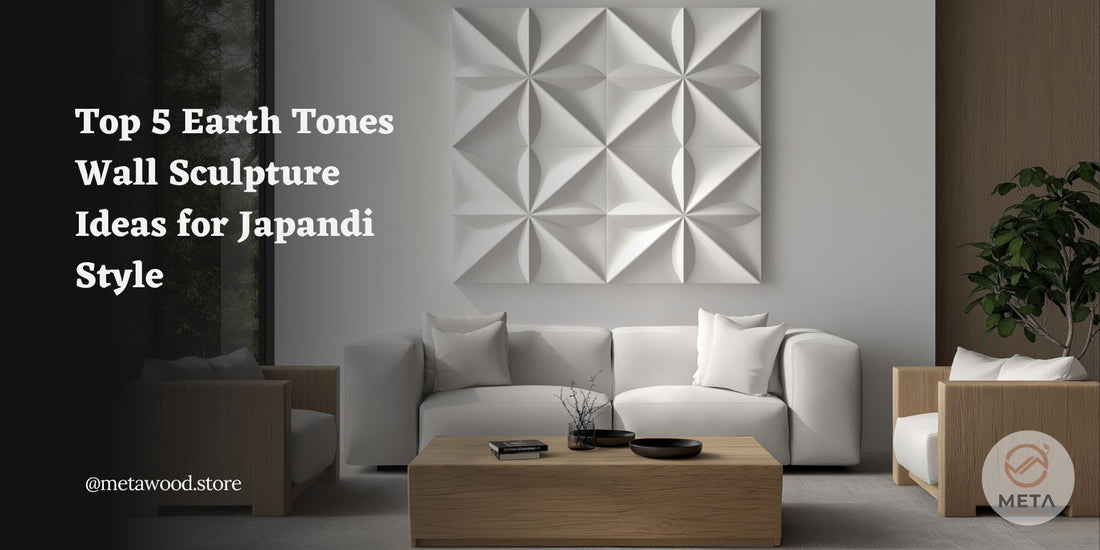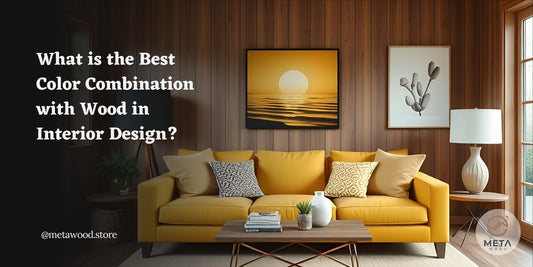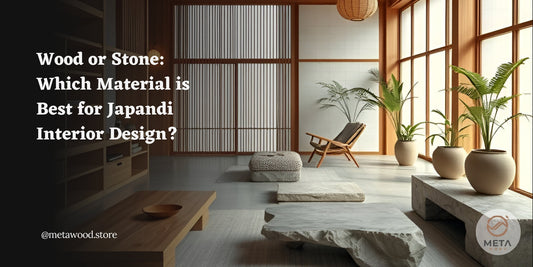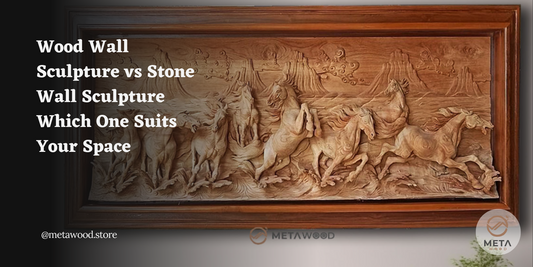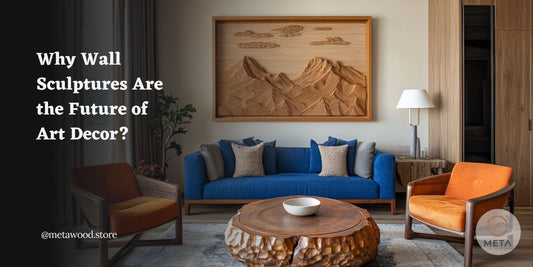When it comes to interior design, wall sculptures are an excellent way to add character, texture, and personality to a room. These three-dimensional pieces of art stand out from the wall, serving as a focal point in a space. Crafted from materials like wood, metal, clay, and fibers, wall sculptures offer endless creative possibilities. The Japandi style, a popular blend of minimalist Japanese design and the natural warmth of Scandinavian interiors, emphasizes clean lines and organic elements. Earth tones, with their grounding hues of browns, greens, and neutrals, are central to Japandi design, and wall sculptures in these palettes perfectly complement the serene and functional atmosphere characteristic of these spaces. Their soft and muted colors create harmony while contributing to the overall sense of simplicity and balance that defines Japandi style. Here are five fantastic wall sculpture ideas for Japandi style:
1. Carved Wooden Wall Sculpture
Carved wood relief sculptures are a timeless and ideal choice for Japandi interiors, offering a natural, earthy vibe that seamlessly aligns with the style's design principles. These sculptures often feature intricate patterns, abstract shapes, or nature-inspired motifs such as leaves, branches, and subtle geometric forms, making them a captivating addition to any wall. The organic texture of wood introduces warmth to a minimalist space, fostering a sense of calm and grounding that is essential in Japandi design.

A key advantage of carved wooden sculptures is their versatility. They can be customized to perfectly complement any Japandi theme, whether you lean towards sleek, modern interpretations or more textured, subtly rustic aesthetics. Wood is also a sustainable material, making it an eco-conscious choice for those mindful of their environmental impact. The inherent grain and warm tones of the wood add depth and character to your walls, enhancing the overall tranquil atmosphere of the room. Consider the interplay of light and shadow on the carved surfaces to add another layer of visual interest.
2. Woven Fiber Wall Art Sculpture
Woven fiber wall sculptures, crafted from materials like rattan, jute, seagrass, or hemp, are another excellent way to introduce texture and visual interest into Japandi style interiors. Often handcrafted, these sculptures feature tactile, organic designs. Their soft, neutral tones blend effortlessly with the natural materials prevalent in Japandi spaces, such as wood, stone, and linen, contributing to a cohesive and harmonious look. A woven fiber sculpture can add a gentle, tactile element to your decor, making the space feel more inviting and cozy without disrupting the overall minimalist aesthetic.

However, it's important to consider the delicate nature of woven fiber sculptures. While their unique texture and handcrafted feel are appealing, they can be more susceptible to damage from direct sunlight or moisture compared to other materials. Placement in areas with stable environmental conditions is recommended to ensure their longevity.
3. Bamboo Wall Art Sculpture
Bamboo is a quintessential material in Japandi design, celebrated for its clean lines, natural beauty, and inherent sustainability. Bamboo wall art sculptures can range from intricate woven patterns that showcase the material's flexibility to simple, minimalist arrangements that highlight its graceful form. The light, earthy tones of bamboo integrate seamlessly into Japandi interiors, bringing an element of the outdoors in while maintaining a sense of calm and tranquility. The verticality often found in bamboo designs can also subtly draw the eye upward, enhancing the sense of space in a room.

While bamboo offers a light and airy feel, some may find its aesthetic too understated for certain spaces. Its lightweight nature might also limit the complexity or scale of the sculpture. Additionally, bamboo can be sensitive to humidity and temperature fluctuations, requiring some care to prevent cracking or warping over time.
4. Stone Relief Wall Sculpture
Introducing a stone relief wall sculpture into a Japandi space brings a sense of enduring natural beauty and subtle texture. Materials like limestone, slate, or even subtly textured concrete in earth tones can create a grounding and sophisticated focal point. These sculptures often feature minimalist geometric patterns, abstract organic forms, or subtle indentations that play with light and shadow. The inherent coolness of the stone provides a beautiful contrast to the warmth of wood, a key element in achieving the balanced feel of Japandi design.

Stone relief sculptures offer a sense of permanence and solidity. Their natural variations in color and texture ensure that each piece is unique. When selecting a stone relief, consider the overall color palette of your room, opting for hues that complement the existing earth tones. While stone is durable, ensure proper mounting due to its weight. The subtle tactile quality of a stone relief can add an intriguing sensory element to your Japandi decor.
5. Ceramic Wall Sculpture in Earth Tones
Ceramic wall sculptures in muted earth tones offer a versatile way to introduce organic shapes and subtle textures to a Japandi interior. These sculptures can range from smooth, minimalist forms to more textured pieces with hand-applied glazes in shades of soft white, warm beige, muted terracotta, or gentle greens. The handcrafted nature of ceramic art aligns well with the Japandi appreciation for artisanal craftsmanship. Consider arrangements of multiple smaller ceramic pieces to create a dynamic yet harmonious wall display.

Ceramic sculptures can add a touch of subtle artistry to a space. Their smooth or slightly textured surfaces offer a pleasing tactile experience. When choosing ceramic pieces, look for glazes that have a natural, slightly imperfect feel, avoiding overly glossy finishes to maintain the organic aesthetic of Japandi design. While generally durable, ceramic can be susceptible to chipping or breaking if mishandled, so secure mounting is essential.
Final Thoughts
These top 5 earth-tone wall sculpture ideas offer a diverse range of textures, materials, and designs that can significantly enhance your Japandi-inspired home. Among these options, the carved wooden wall sculpture, particularly a wood relief sculpture, stands out for its timeless appeal, natural warmth, and ability to seamlessly integrate with the core principles of Japandi design.
For those seeking high-quality, customizable handcarved wall sculpture relief from wood, look no further than Metawood. As a dedicated artisan studio, Metawood specializes in creating unique, handcrafted wooden wall sculptures tailored to perfectly complement your Japandi style home. Explore our collection and bring the beauty of natural wood and exquisite craftsmanship to your walls.

